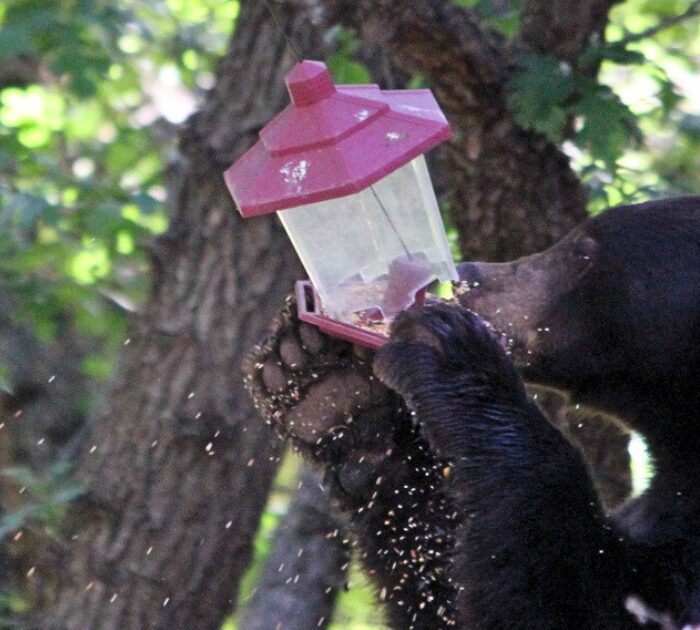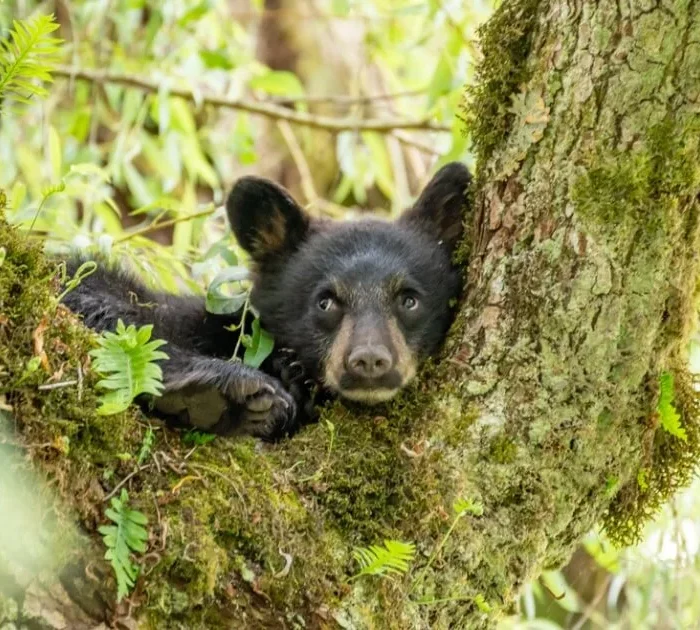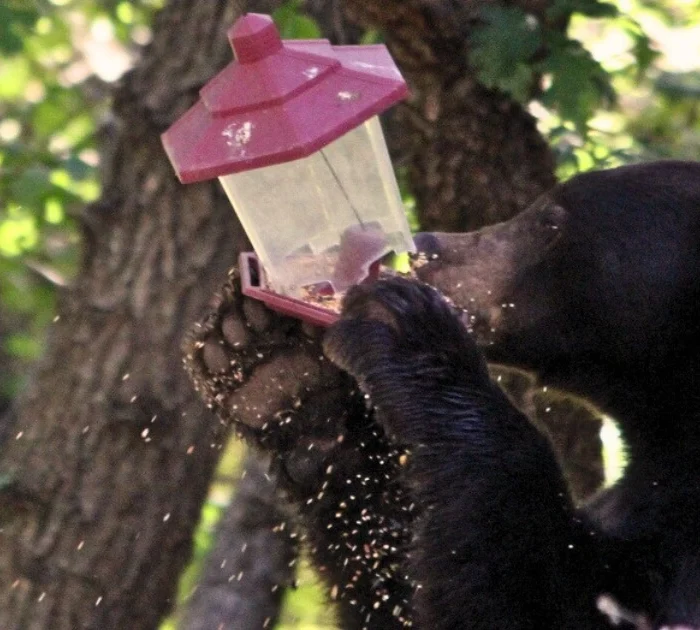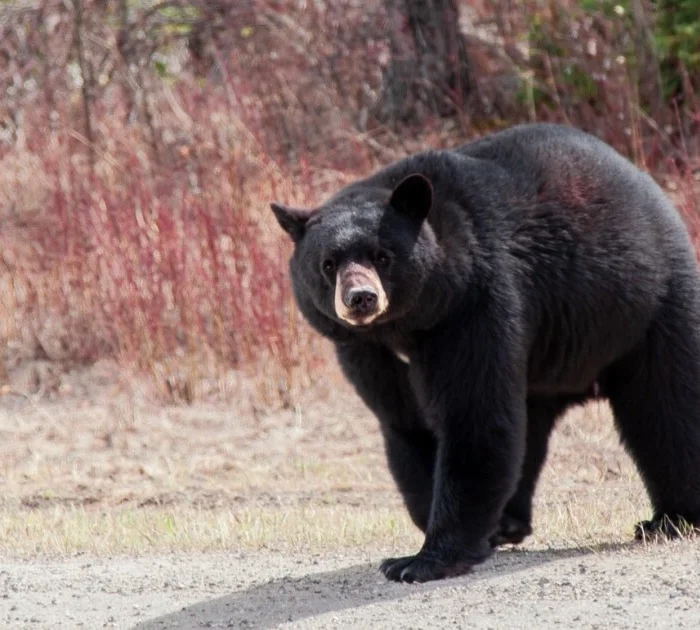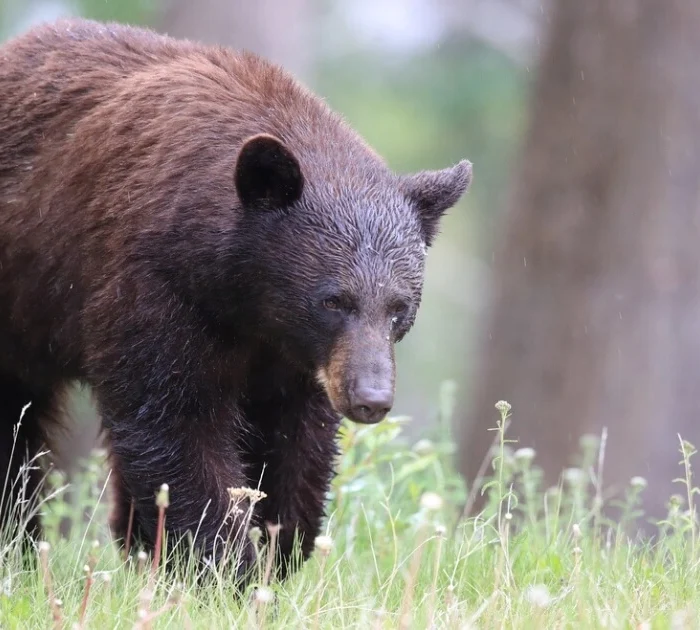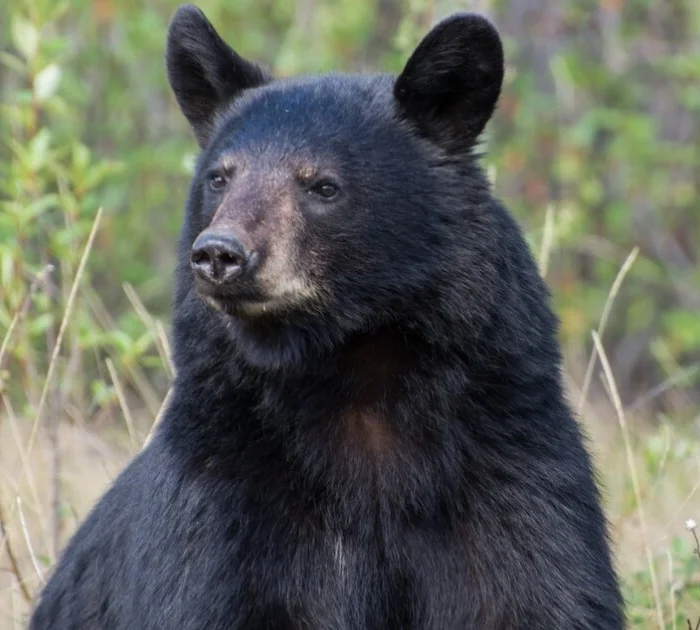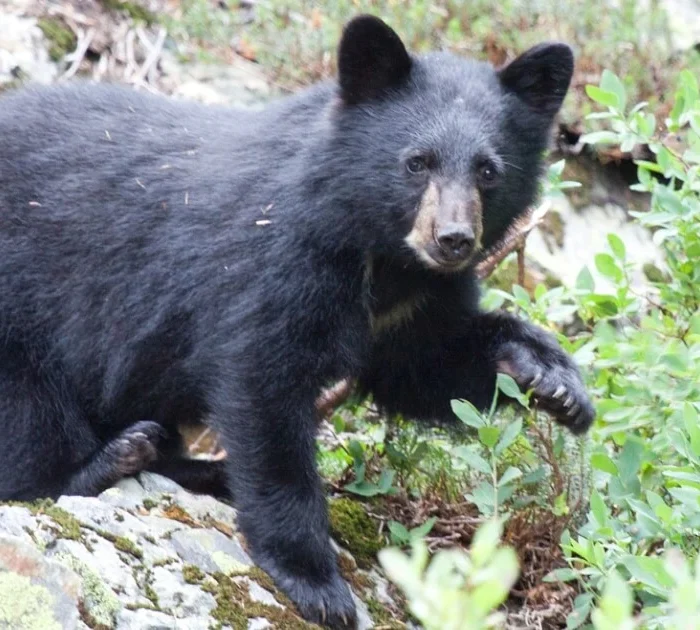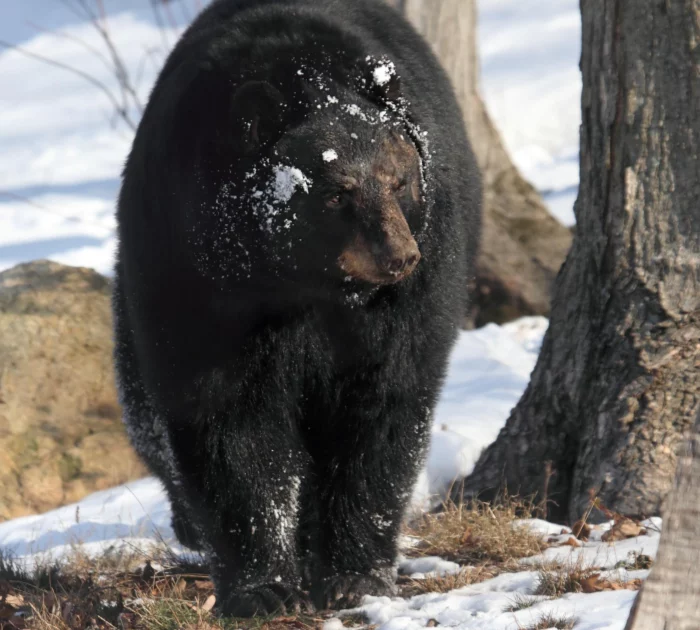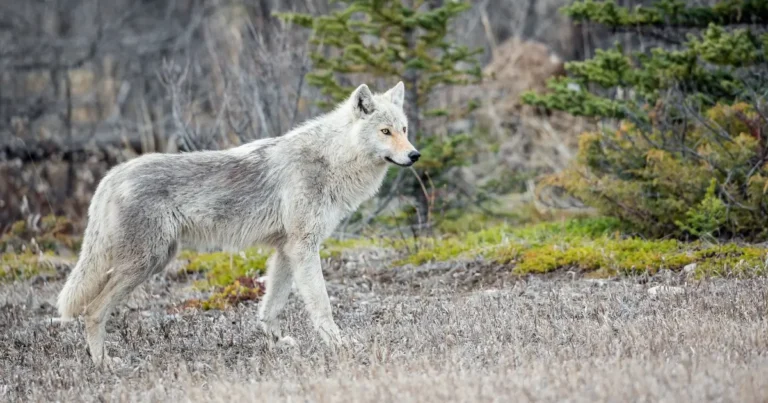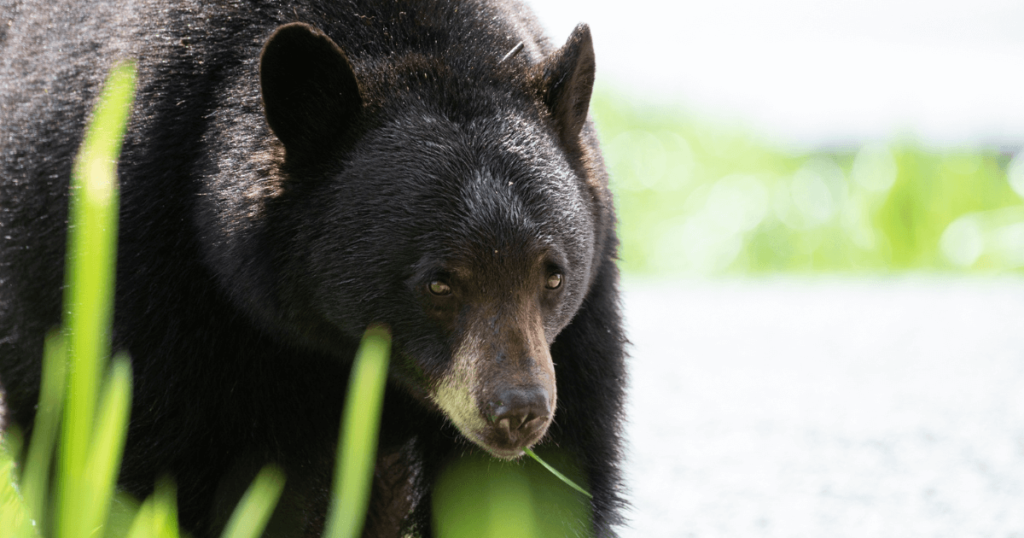
Reducing negative outcomes for black bears in British Columbia can be seen complex, as there are numerous jurisdictions and agencies involved, as well as various localized needs. But everyone can participate in promoting coexistence and making positive change for bears in their communities.
- Attractants around your home. Bears (and other wildlife) follow their noses and will take extra risks to get easy snacks. Remove attractants such as outdoor pet food, bird feeders, and barbecue grease traps. Take a look at this list to learn more about attractants that may surprise you, like citronella candles (bears love ‘em).
- Waste management. Properly secure trash in wildlife-resistant bins, rinse food containers before putting them in recycling, and follow your municipal or regional district’s requirements for keeping waste secure until pickup time.
- Landscaping and gardening. Fences mean little to most wildlife in Canada, and it’s important to consider what attractants we create through our landscaping and gardening choices. Pick fruit and berries while ripe, and remove from the ground immediately if fallen; consider adding electric fencing to gardens to keep bears away; harvest vegetables as soon as they’re ripe.
- Educate! Individuals can make a big difference in their communities by sharing content from The Fur-Bearers on coexistence into local Facebook groups, WhatsApp chats, or other social media platforms. Our bear coexistence door hangers are an easy way to get out and distribute information in your neighbourhood, too. Click here to learn more about our door hangers and how to order some for you to distribute in your community.
- Get involved. The following sections on community groups, businesses, municipal governments and provincial government all require individuals to advocate for solutions. Keep reading to learn how to make an impact as an individual at higher levels of government!
- If you’re already a member of a community group, providing education is simple! You can request presentations from groups like The Fur-Bearers, or educational materials that can be distributed within the group. Your community group can also cover a significant amount of ground in distributing door hangers or organizing educational/awareness events.
- Fruit trees, as an example, can be a lot of work for some people. Large volumes of fruit can quickly grow and fall, creating significant attractants for wildlife. Some organizations like the Vancouver Fruit Tree Project have programs that benefit the whole community by collecting the fruits and distributing them to food banks or even selling them to fund local programs.
- A collection of community voices can be impactful when presented to businesses, municipalities and provincial leaders. Consider advocating for by-laws, education, and enforcement to reduce negative outcomes for wildlife.
- Waste management. Dealing with the trash can be a job no one wants at a small or large business, but it remains an essential task for all operations. It is also one of the most significant ways that businesses and business owners can help reduce negative outcomes for wildlife. Ensure that your dumpsters, recycling, food waste, and storage are wildlife-resistant and appropriately secured. Be prepared to invest in and adapt your waste management practices to be a positive community partner for your neighbourhood as well as wildlife.
- Particularly at the retail level, businesses have an incredible opportunity to educate or provide educational opportunities to the community. Consider placing wildlife coexistence materials (available from The Fur-Bearers upon request) near your checkout or on a community board. Work with your local community groups, municipalities, and provincial agencies to find out what information could be best suited for your neighbourhood, and how you can help spread important safety information to consumers.
- By-laws. Municipal governments may not be responsible for wildlife, but attractant management and resident behaviour do fall within their jurisdiction. Implementing wildlife attractant (and feeding) by-laws creates a significant educational and enforcement tool that can mitigate negative encounters and improve coexistence in your community. Click here to check out the Wildlife Attractant By-Law Toolkit created by the Get Bear Smart Society.
- As the level of government with the most frequent engagement to residents, municipalities and regional districts have outstanding opportunities to provide educational materials. The Fur-Bearers works with municipalities to create original, co-branded, or “ghost written” educational materials for web sites, social media, and print distribution items. We are also available to provide educational presentations and outreach. Contact us to find out more at info@TheFurBearers.com.
- Cross-jurisdictional efforts. Coexisting with wildlife isn’t just a provincial or municipal responsibility; working with the multiple agencies and levels of government involved while focusing on solutions is imperative. Consider reaching out to counterparts in other communities or governments to start bridging the gaps that currently exist in response to and management of wildlife-related issues.
- Oversight. The agency responsible for responding to negative encounters with wildlife, the BC Conservation Officer Service, has no independent, third-party oversight despite being an armed policing agency. This agency kills over 500 black bears per year, on average. BC’s Auditor General in 2017 wrote that programs like WildSafeBC have no proper evaluations in place, despite receiving ongoing government funding from the BCCOS. Creating oversight of the BCCOS, WildSafeBC, and allocating appropriate resources to education and prevention of negative encounters, are essential to achieve sustainable coexistence in British Columbia.
- Jurisdictional clarity. Individuals and municipalities are frequently uncertain as to who is responsible for what when it comes to wildlife-related issues. As the province holds stewardship for wildlife, it is imperative that jurisdictional clarity be prioritized: who is responsible for what when it comes to attractant management, education, investigation and enforcement, and so on. If the province will not be solely responsible, it should be clearly stated, and the opportunities for municipalities to engage in education and enforcement must be highlighted and accessible.
- Prioritizing education and enforcement. The BC Conservation Officer Service kills over 500 black bears per year on average, but issues very few citations, orders, or fines. While there is a significant number of calls for service (which is confused by mixed messaging on when to call), the ratio of bears killed when responding compared to other human-based enforcement actions is significant. Making education and enforcement of human behaviour (which is the cause for most killings of bears, according to the BCCOS) a priority is logical and essential.
Resources
Social Media Sharables
Have ideas we should include? Reach out to us at info@TheFurBearers.com or tag us on Facebook, Instagram, or Twitter with your suggestions! This page will be updated as more tools are available.
Black bears across Canada are looking for food, safety and sometimes a bit of fun. That means residents need to brush up on coexistence knowledge – and we’ve got a tool to help! Our bear door hangers are FREE upon request. Get them for your neighbourhood: https://t.co/Fg4eeymJcK pic.twitter.com/19bsrSkKgQ
— The Fur-Bearers (@FurBearers) June 28, 2022
We want to help communities across Canada coexist with black bears by providing our bear coexistence door hangers! These door hangers are FREE upon request. Find out how to get them for your neighbourhood: https://t.co/Fg4eeymJcK#bearaware #bearsmart #stashyourtrash #coexist pic.twitter.com/0Eoi8yXsBJ
— The Fur-Bearers (@FurBearers) June 20, 2022
Identifying and removing attractants can reduce the chances of negative encounters with wildlife throughout your community. Learn more about how to coexist with wildlife across Canada at https://t.co/4dpcZwuEIF! #StashYourTrash pic.twitter.com/G9up103uH7
— The Fur-Bearers (@FurBearers) May 23, 2022
You may also be interested in:
Bird feeders feed bears
Spring’s arrival means it’s time to put away feeders to protect wildlife who are killed when they become "food conditioned".
City of Rossland makes pawsitive move for bears
New bylaw puts financial pressure on residents to make change for black bears and other wildlife
How feeding birds feeds bears and coyotes
You can’t control who gets attracted by food or eats it when left in nature, and that can lead to consequences for wildlife.
End cycle of killing by billing repeat offenders
Black bears are being killed in disproportionate numbers in some municipalities, while we all pay the price
NEWS: Black bears on the move
September among worst months for bear deaths in British Columbia; residents reminded to secure attractants
Fall Wildlife Attractants Checklist
Help keep wildlife wild and your community coexisting by using this simple checklist.
BC’s Deadliest Communities for Black Bears
2022 data reveals the areas where bears are most often killed by Conservation Officers.
Warm winter weather can wake wildlife
People-provided food can keep bears, other animals from resting and create negative encounters
